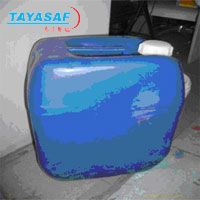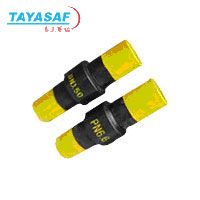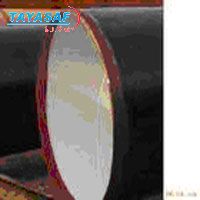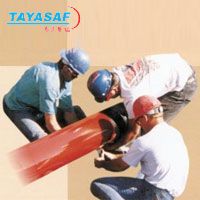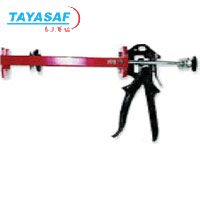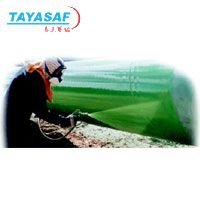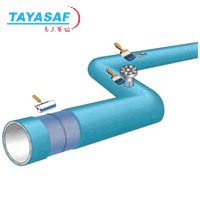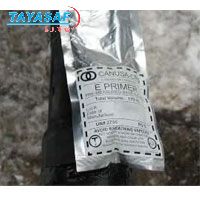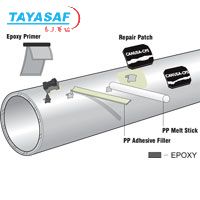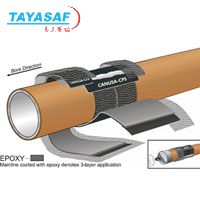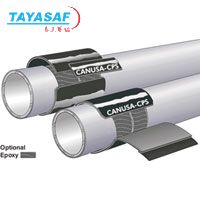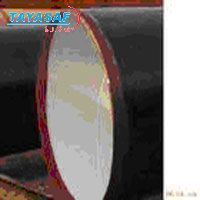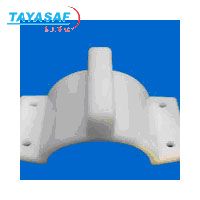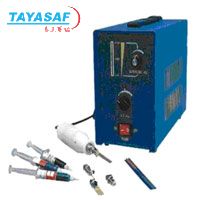Selection & Specification Data
|
Generic |
Coal Tar |
|
Description |
Ultra-high build, single-component coal tar mastic for protecting steel and concrete substrates subject to aggressive conditions and for below grade damp proofing requirements. |
|
Features |
Application up to 30 dry mils (750 microns) in a single coat.
Self priming, single-coat capabilities.
Excellent corrosion resistance.
Complies with MIL-C-18480-B and Bureau of Reclamation CA50 specifications. |
|
Color |
Black (0900) |
|
Finish |
Low gloss.= |
|
Primers |
Self-priming |
|
Topcoats |
Not recommended |
|
Dry Film Thickness |
18.0 mils (450 microns) in one or two coats.
Total dry film thickness less than 12 mils (300 microns) or in excess of 30 mils (750 microns) not recommended. |
|
Solids Content |
By volume: 68% ± 2% |
|
Theoretical Coverage Rate |
1090 mil ft2 (26.7 m2/l at 25 microns).
Allow for loss in mixing and application |
|
Nominal VOC Values |
As supplied: 3.0 lbs./gal (360 g/l)
Thinned: 12 oz/gal w/ Thinner #10, 3.5 lbs./gal (417 g/l) |
|
Dry Temperature Resistance |
Continuous: 350°F (177°C)
Non-continuous: 400°F (204°C) |
|
Wet Temperature Resistance |
Immersion temperature should not exceed 120°F (49°C). |
|
Limitations |
Do not use for potable water requirements. |
Substrates & Surface Preparation
|
General |
Surfaces must be clean and dry. Employ adequate methods to remove dirt, dust, oil and all other contaminants that could interfere with adhesion of the coating. |
|
Steel |
Immersion: SSPC-SP10
Non-Immersion: SSPC-SP6 for maximum protection. SSPC-SP2 or SP3 as minimum requirement.
Surface Profile: 2.0-3.0 mils (50-75 micron) |
|
Galvanized Steel |
Non-Immersion: Sweep blast to roughen surface and produce a 1.0-2.0 (25-50 micron) profile. |
|
Concrete |
Concrete must be cured 28 days at 75° F (24° C) and 50% relative humidity or equivalent. Prepare surfaces in accordance with ASTM
D4258 Surface Cleaning of Concrete and ASTM D4259 Abrading Concrete. Voids in concrete may require surfacing. |
Application Equipment
Listed below are general equipment guidelines for the application of this
product. Job site conditions may require modifications to these guidelines
to achieve the desired results.
|
Spray Application (General) |
This is a high solids coating and may require adjustments in spray techniques. Wet film thickness is easily and quickly achieved. The following spray equipment has been found suitable and is available from manufacturers such as Binks, DeVilbiss and Graco. |
|
Conventional Spray |
Pressure pot equipped with dual regulators, 3/8” I.D. minimum material hose, with 50' maximum material hose .086” I.D. fluid tip and appropriate air cap. |
|
Airless Spray |
Pump Ratio: 30:1
GPM Output: 3.0 (min.)
Material Hose: 3/8” I.D. (min.)
Tip Size: .023-.035”
Output PSI: 2300-2500
Filter Size: 30 mesh
Teflon packings are recommended and available from the pump manufacturer. |
|
Brush & Roller (General) |
Recommended for touch up and striping of weld seams and hard-to-coat areas. Avoid excessive rebrushing or re-rolling. |
|
Brush |
Use a medium bristle brush. |
|
Roller |
Use a short-nap synthetic roller cover with phenolic core. |
Mixing & Thinning
|
Mixing |
Power mix until uniform in consistency. |
|
Thinning |
May be thinned up to 12 oz/gal (10%) with Thinner #10 if needed. When used directly to concrete, thinning is required on the first coat to provide adequate “soak-in”. Use of thinners other than those supplied or recommended by Carboline may adversely affect product performance and void product warranty, whether expressed or implied. |
Cleanup & Safety
|
Cleanup |
Use Thinner #2 or Xylene. In case of spillage, absorb and dispose of in accordance with local applicable regulations. |
|
Safety |
Read and follow all caution statements on this product data sheet and on the MSDS for this product. Employ normal workmanlike safety precautions. Hypersensitive persons should wear protective clothing, gloves and use protective cream on face, hands and all exposed areas. |
|
Ventilation |
Warning: Vapors may cause explosion. When usedin enclosed areas, thorough air circulation must be used during and after application until the coating is cured. The ventilation system should be capable of preventing the solvent vapor concentration from reaching the lower explosion limit for the solvents used. User should test and monitor exposure levels to insure all personnel are below guidelines. If not sure or if not able to monitor levels, use MSHA/NIOSH approved respirator. |
|
Caution |
This product contains flammable solvents. Keep away from sparks and open flames. All electrical equipment and installations should be made and grounded in accordance with the National Electric Code. In areas where explosion hazards exist, workmen should be required to use non-ferrous tools and wear conductive and non-sparking shoes. |
|
MSDS |
|
Application Conditions
|
Condition |
Material |
Surface |
Ambient |
Humidity |
|
Normal |
60 to 85°F
(16 to 29°C) |
60 to 85°F
(16 to 29°C) |
60 to 90°F
(16 to 32°C) |
0-80% |
|
Minimum |
50°F (10°C) |
50°F (10°C) |
50°F (10°C) |
0% |
|
Maximum |
90°F (32°C) |
125°F (52°C) |
110°F (43°C) |
90% |
Industry standards are for substrate temperatures to be above the dew point. This product simply requires the substrate temperature to be above the dew point. Condensation due to substrate temperatures below the dew point can cause flash rusting on prepared steel and interfere with proper adhesion to the substrate. Special application techniques may be required above or below normal application conditions.

 泰亚赛福 —— 世界领先的检测仪器集成供应商
泰亚赛福 —— 世界领先的检测仪器集成供应商 


 您当前的位置:
您当前的位置: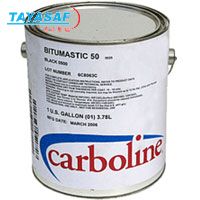

 加入对比
加入对比


